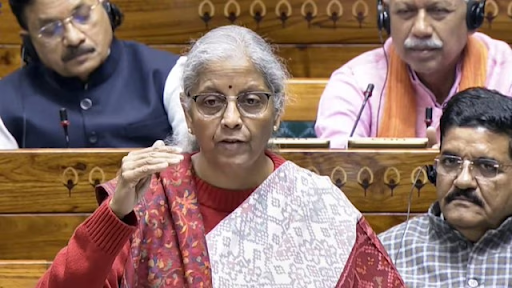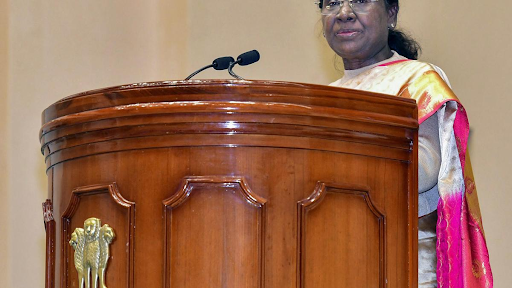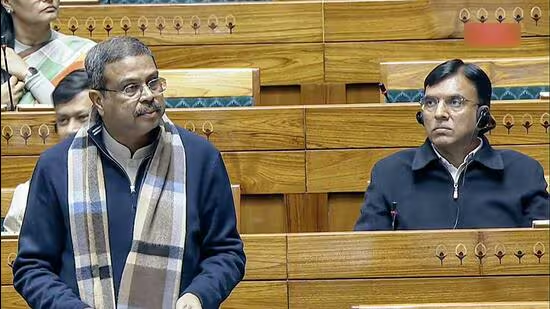



The Supreme Court highlighted flaws in India’s outdated property laws, noting that the current presumptive titling system under the 1908 Act records transactions but not ownership. It urged the Law Commission to explore blockchain-based reforms for transparent, secure land records and conclusive property titles.

Copyright infringement not intended
Picture Courtesy: ECONOMICTIMES
The Supreme Court has called for comprehensive reforms in the property registration system, advocating for the replacement of the outdated presumptive titling system with land titling framework, utilizing blockchain technology.
|
Read all about: SUPREME COURT SAFEGUARDS PRIVATE PROPERTY RIGHTS GENDER GAP IN PROPERTY RIGHTS TRANSFER OF PROPERTY ACTSC VERDICT ON PRIVATE PROPERTYSVAMITVA SCHEME FOR PROPERTY CARDSENEMY PROPERTIES |
Originally, the right to property was a fundamental right under Article 19(1)(f) and Article 31 of the Constitution.
Under Article 300A, individuals can only be deprived of it by legal authority, with fair compensation and procedure, as property rights are also human rights.
The Right to Fair Compensation and Transparency in Land Acquisition, Rehabilitation and Resettlement Act, 2013 (LARR Act) focuses on fair compensation and rehabilitation.
The current property system records transactions, not ownership.
A registered sale deed serves as evidence but not proof of title.
Unclear Ownership
Despite advancements in digitizing land records, India still faces challenges with title issues due to its "presumptive" titling system, which lacks government guarantees, unlike a "conclusive" system.
Litigation Overload
Land disputes account for nearly two-thirds of all civil cases in India. (Source: World Bank)
According to NITI Aayog, land disputes can take up to 20 years to resolve, clogging courts and discouraging investment.
Rampant Fraud and Corruption
Duplicate sale deeds, tampered records, and fake documents persist because of poor recordkeeping and weak oversight.
Cumbersome Registration
Multiple departments, high stamp duties, and partial digitization make registration slow and error-prone.
Economic Drag
Unclear titles prevent property from being used as collateral, restricting credit for farmers and small businesses and stalling infrastructure projects.
Gender Inequality
National Family Health Survey (NFHS-5) data show that only 31.7% of women own land (alone or jointly) compared to 43.9% of men. This limits their economic independence and access to institutional credit.
Conclusive Land Titling
Land reform aims to establish conclusive titles, a government-backed ownership system. NITI Aayog's Model Land Titling Act advocates for this, but states have been slow to implement it.
Digitization of Land Records (DILRMP)
Since 2008, the Digital India Land Records Modernization Programme has digitized over 98% of rural land records. (Source: PIB)
States like Karnataka (Bhoomi) and Gujarat (E-Dhara) demonstrate the advantages of transparency and reduced corruption. However, full integration is hampered by outdated surveys and inconsistent records.
Launched in 202, this drone-based initiative maps village lands and provides digital “Record of Rights” to property holders.
By early 2025, over 2.25 crore property cards had been distributed, reducing disputes and enabling access to credit. (Source: PIB)
Recent Legal Reforms
Mandatory Aadhaar-based verification for transactions, stronger women’s inheritance rights, and fast-track dispute resolution under Real Estate Regulatory Authority (RERA), to reduce fraud, speed up registration, and make ownership more secure.
National Framework for Conclusive Titling: The Centre and states must jointly enact uniform laws guaranteeing ownership and establishing a single digital repository.
Accelerated Digitization and Mapping: Expand drone mapping, enhance IT infrastructure, and invest in training to improve access and accuracy.
Blockchain Adoption: Design a regulatory blueprint for blockchain integration, ensuring legal validity and interoperability with existing systems.
Simplification and Harmonization: Review colonial-era laws, streamline documentation, and standardize procedures across states.
Efficient Dispute Resolution: Create fast-track land tribunals and strengthen mediation mechanisms to ease the judicial burden.
Empowering Women: Introduce targeted policies and awareness campaigns to bridge gender gaps in ownership and inheritance.
Conclusion
The Supreme Court's intervention offers a historic opportunity to reform property law. By implementing conclusive land titling, blockchain, and digitization, land management can become an engine of growth, rather than conflict.
Source: ECONOMICTIMES
|
PRACTICE QUESTION Q. Discuss the challenges in implementing a uniform land titling system in India. 150 words |







© 2025 iasgyan. All right reserved